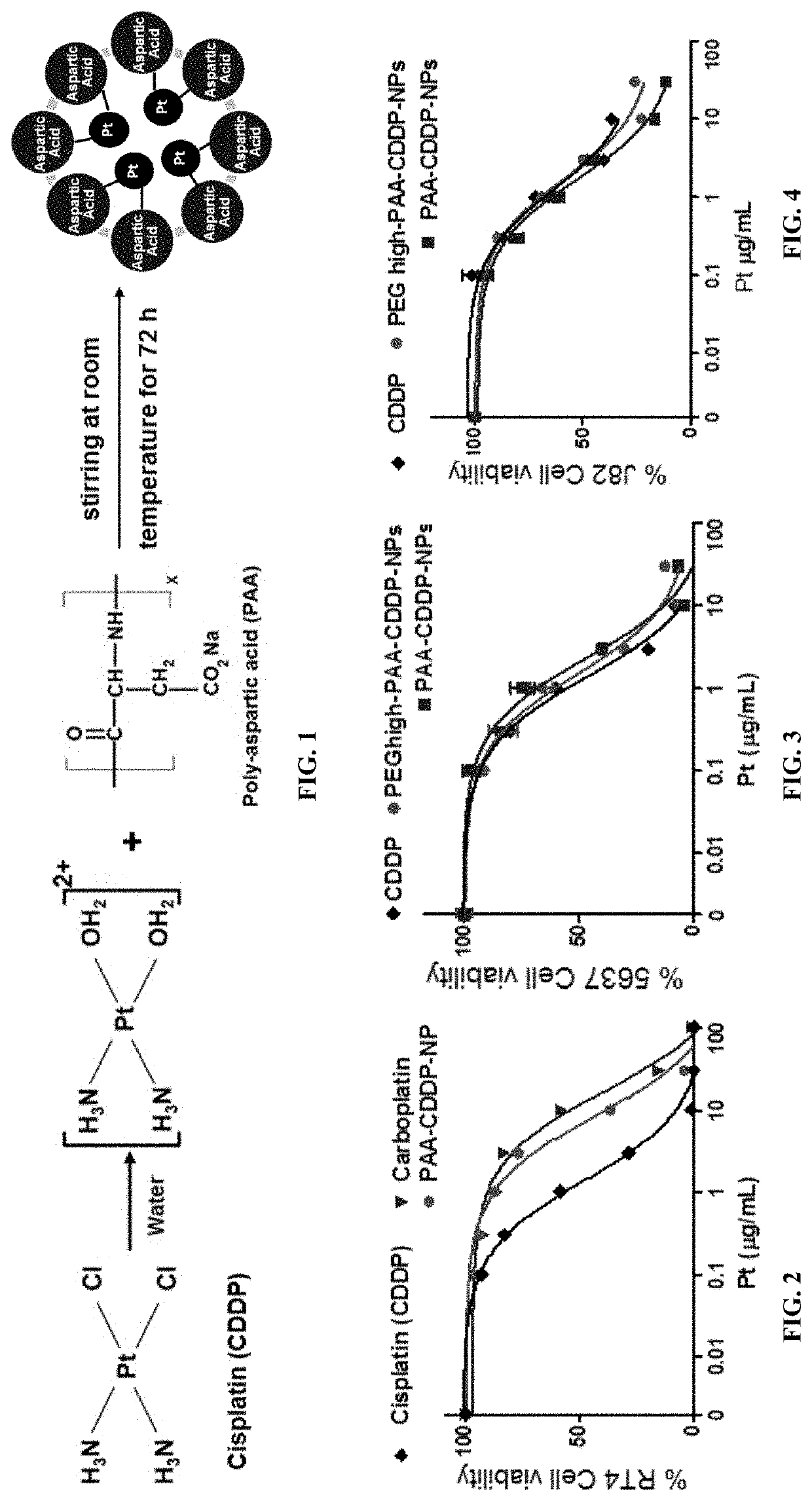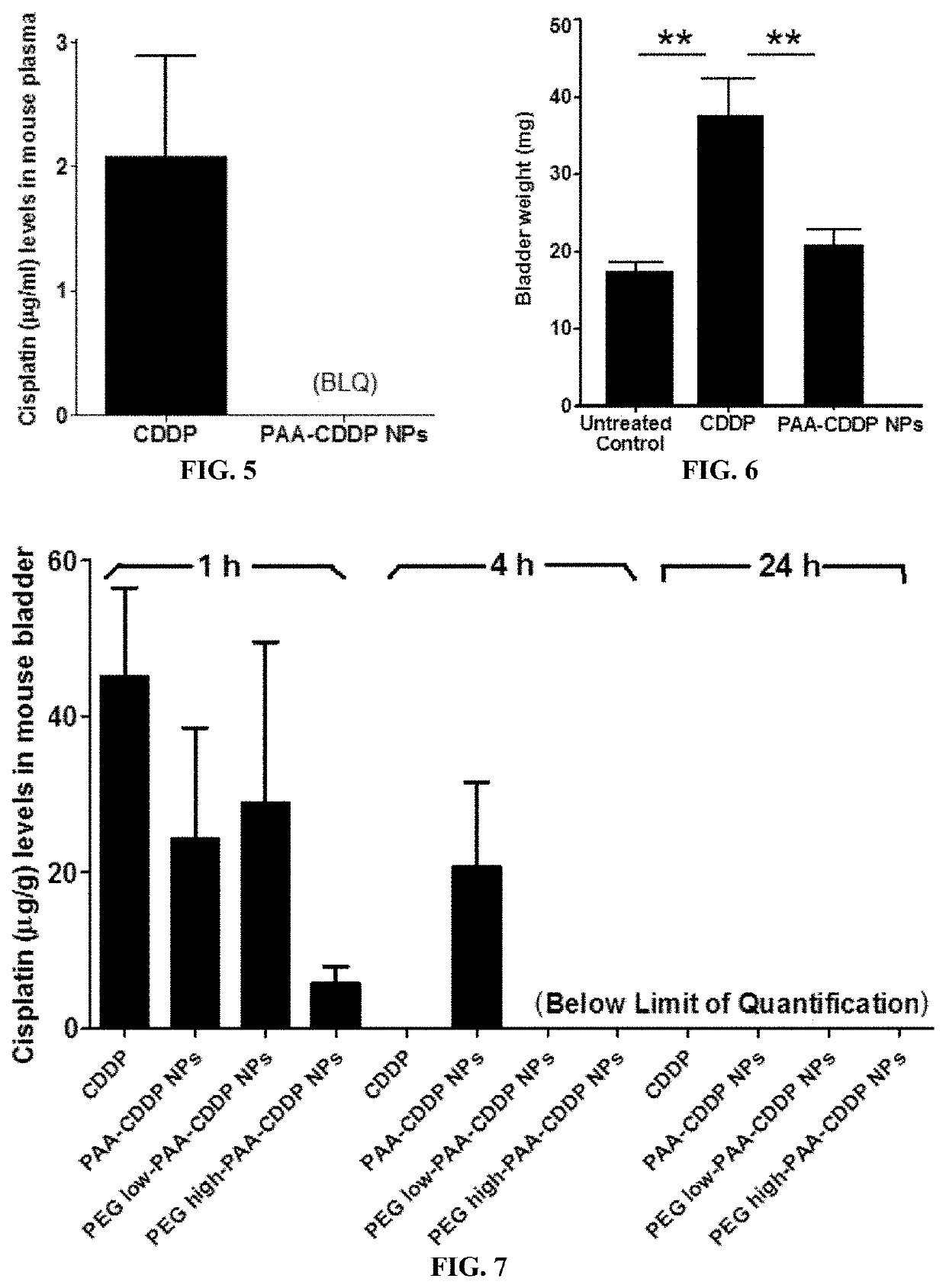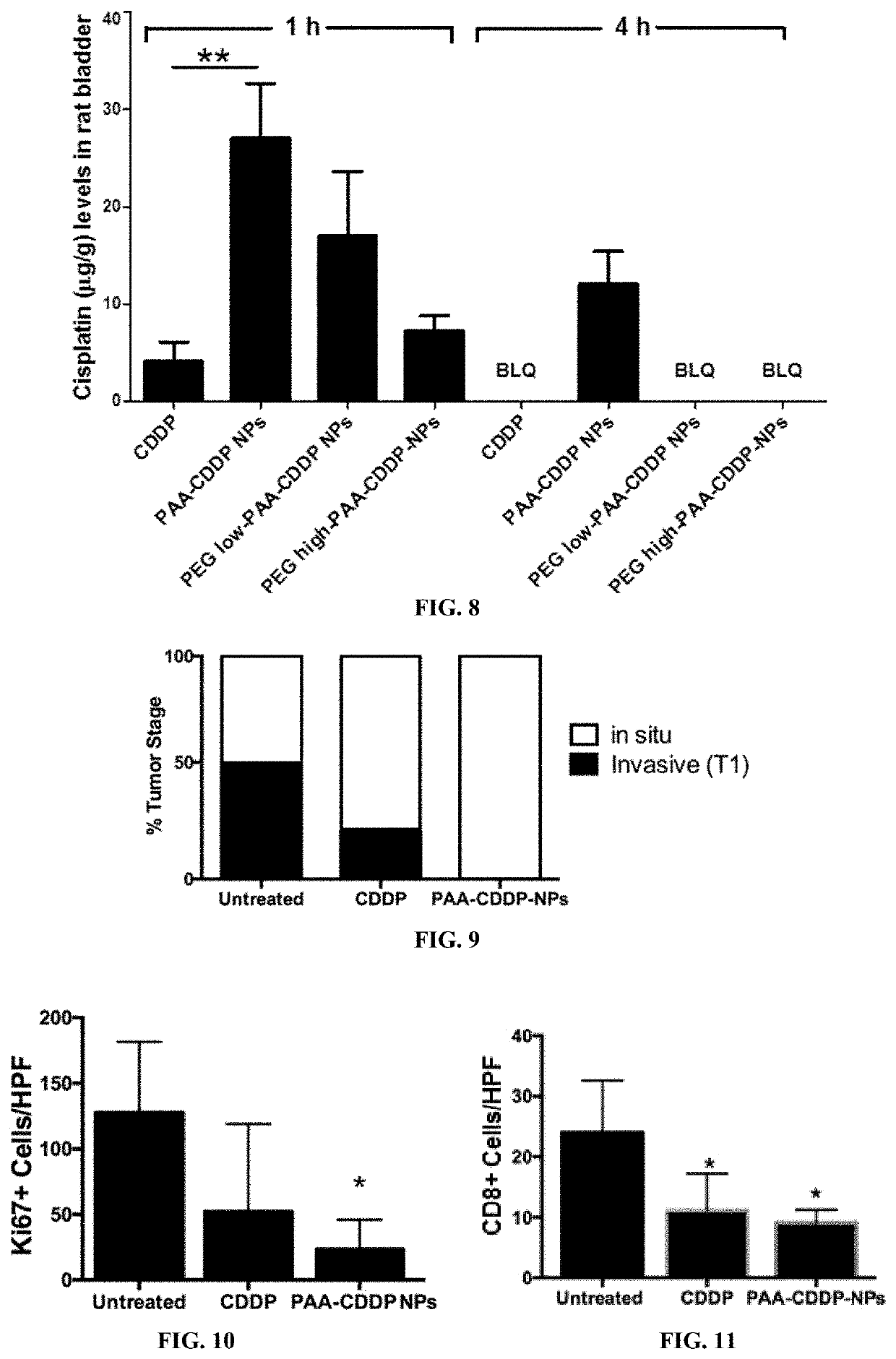Nanoparticle formulations for enhanced drug delivery to the bladder
a technology of nanoparticles and drug delivery, which is applied in the direction of immunoglobulins, peptides/protein ingredients, peptides/protein ingredients, etc., can solve the problems of limiting the success of bladder benign and malignant disease therapies, and reducing the toxicity and side effects of these agents. , the effect of enhancing the immune response of the subj
- Summary
- Abstract
- Description
- Claims
- Application Information
AI Technical Summary
Benefits of technology
Problems solved by technology
Method used
Image
Examples
example 1
Medium Facilitated Nanoparticle Uptake by Bladder; and “Soft” (“Dissolvable”) Nanoparticles Achieved Non-Reversible Drug Penetration into Bladder Tissue Before Reversal of Osmotic Imbalance
[0138]The bladder epithelium is exposed to urine with a composition widely different from that of plasma (isotonic), and must maintain osmotic equilibrium using a mechanism that does not involve water transfer across the epithelial surface. Unlike other mucosal surfaces such as the colon or the vagina, which absorb water across the epithelium to re-establish osmotic equilibrium, the bladder epithelium forms fluid-filled vesicles that can reversibly fuse with the bladder epithelium.
[0139]Materials and Methods
[0140]Using non-degradable polystyrene nanoparticles, the impact of medium tonicity on delivery of nanoparticles (NPs) to the bladder was assayed.
[0141]Results
[0142]Microscopic images demonstrated the uptake by the bladder of nanoparticles in a hypotonic fluid, whereas the majority of nanoparti...
example 2
“Soft” Nanoparticles (Formed Via Ionic Interactions) with and without Low and High Grafting Density of PEG are Effective in Killing Cancer Cells In Vitro
[0145]Materials & Methods
[0146]Poly-L-aspartic acid (PAA) with molecular weight (MW) of 27 kDa and linear PEG-PAA (MW: 5 kDa / 27 kDa) were purchased from Alamanda Polymers (Huntsville, Ala.). According to the vendor, poly-L-aspartic acid sodium salt is a negatively charged synthetic polyamino acid having one Na per aspartic acid unit. Cis-diamminedichloroplatinum (cisplatin or CDDP, 99.9%), silver nitrate, and 100 kDa Amicon-Ultra-2 mL filters were purchased from Sigma-Aldrich (St. Louis, Mo.). 20 kDa and 50 kDa dialysis cassettes were obtained from Spectrum Labs (Rancho Dominguez, Calif.). AlexaFluor 647-cadaverine was purchased from Thermo Fisher Scientific (Waltham, Mass.). PEG (NH2-PEG-OCH3; MW: 5 kDa) was purchased from Creative PEGworks (Winston Salem, N.C.) and 1-ethyl-3-(3-dimethylaminopropyl) carbodiimide (EDC) was purchased...
example 3
Reduced Systemic Exposure and Local Toxicity of CDDP In Vivo (Mouse and Rat)
[0161]Materials & Methods
Assessment of Toxicity in Mice
[0162]Female CF-1 mice (age 8 weeks) were purchased from Harlan (Indianapolis, Ind.) and acclimated in the animal facility for 4 weeks. Mice were randomly divided into different groups (n≥5). Mice were anesthetized with an isoflurane vaporizer and nose cone system and catheterized using polyethylene tubing mounted on a 30G needle. After catheterization, the bladder was emptied of urine by aspiration and / or gentle pressure on the abdomen. Then, 100 μl of CDDP solution, PAA-CDDP NPs, PEGlow-PAA-CDDP NPs or PEGhigh-PAA-CDDP NPs at 0.7 mg / ml CDDP content was instilled into the bladder by intravesical administration. Mice were maintained under anesthesia for 1 h and then allowed to wake up. To assess systemic exposure, mice were euthanized at 1, 4, and 24 h and plasma was obtained for analysis of CDDP content. To assess local toxicity of CDDP solution and CDD...
PUM
| Property | Measurement | Unit |
|---|---|---|
| osmolality | aaaaa | aaaaa |
| osmolality | aaaaa | aaaaa |
| osmolality | aaaaa | aaaaa |
Abstract
Description
Claims
Application Information
 Login to View More
Login to View More - R&D
- Intellectual Property
- Life Sciences
- Materials
- Tech Scout
- Unparalleled Data Quality
- Higher Quality Content
- 60% Fewer Hallucinations
Browse by: Latest US Patents, China's latest patents, Technical Efficacy Thesaurus, Application Domain, Technology Topic, Popular Technical Reports.
© 2025 PatSnap. All rights reserved.Legal|Privacy policy|Modern Slavery Act Transparency Statement|Sitemap|About US| Contact US: help@patsnap.com



